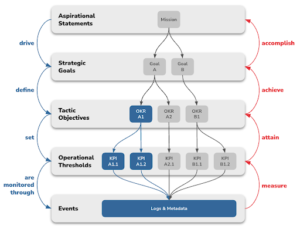Data strategy is an essential part of any business. Data is the fuel that powers your company’s analytics, marketing, and operations. You need to know how to best use your data if you want to outpace the competition, increase sales, and build customer loyalty.
But even with the right tools available at your fingertips, it’s easy for a data strategy to fall short or go off track without proper oversight and leadership. Read on to explore ways to make your data strategy more effective.
The Importance of Data Consistency & Quality
Data is king, and having good data quality is a critical factor in the success of your overall data strategy. While many businesses have invested significantly in an automated system for collecting data, ensuring that all required fields are filled out and the correct information is recorded can take time and effort.
Additionally, there may be gaps between what is being captured at one point and another. For example, if your company recently acquired another company with its historical records on hand or someone has left but has yet to be removed from all systems. This inconsistency can create confusion later in the process when trying to decipher trends or make sense of specific results.
Even well-documented processes will vary depending on who’s doing them—and not everyone follows them correctly every time. Suppose different people are entering various types of information into other places at different times. In that case, this could create problems down the line when it comes time for analysis because things won’t match up properly across departments or campaigns. These factors signify the need for lead roles, such as executives and directors, to digitally transform the business and culture through data analytics.
Justifying Your Investment in Data Analytic Capabilities
The business case for data analytics is clear: it’s become a major organizational priority and key differentiator to improve business intelligence. But just having the right people in place and the right tools and infrastructure doesn’t mean you’re entirely on track to reap the full benefits of your investment.
The following questions should help you determine what needs to be done to maximize ROI from your data strategy:
- How do I know that my current investments are working?
- What are my goals? How will I measure success?
- Are there any barriers between where we are now and where we want to be? If so, what can we do about them?
Using Data to Help Your Company Achieve Measurable Outcomes
To demonstrate the business benefit of a data-driven solution, our Continuous Value Delivery Model (CVD) includes a specific phase in which the data analytics deliverables aim to achieve relevant results. The CVD model allows effective tracking of how the investment in advanced analytic capabilities and AI is helping to attain specific results. It is a four-step process:
- Collecting data on your business’s current state, including information about customers and their behaviors, such as financial performance or satisfaction scores.
- Determining where to apply analytics — for example, improving customer service using AI chatbots that respond to customer questions online or providing better recommendations for merchandise based on buying history data.
- Creating an algorithm that will use this information to produce real-time insights on areas where you have decided to focus your efforts (this can be done without coding experience).
- Running tests with real people (or A/B testing) on different versions of your website or app with various features enabled (such as an optimized checkout process). These tests will give you concrete numbers showing which version works best at achieving its goals — for example, increased sales conversions or higher customer retention rates (the number one indicator for future growth opportunities).
You should use this process to show how your business will benefit from having access to more accurate and timely information. The information could center around customers and prospects. It could demonstrate how you’ll be able to use your newly acquired insights when making future decisions by providing examples that illustrate how those insights have been applied in practice. This can help make it easier for stakeholders unfamiliar with data science techniques to understand why investing time and money into building these capabilities is worthwhile for the organization.
The diagram above helps to connect all the concepts and tasks involved in aligning strategy, tactics, and operations to get tangible business benefits. It also highlights the relevance of having carefully designed metadata to ensure the capture of complete and accurate measurements, as they are the most fundamental component of this framework.
How Metadata Impacts Data Quality
Having carefully designed metadata captures complete and precise measurements, an essential component of this framework. Metadata is a structured set of information about a particular data object that defines its characteristics and enables it to be located, identified, used, managed, and preserved over time. Information about who created it, when it was made, how it should be accessed (e.g., through which interface), and how long its retention period should be maintained.
Metadata provides context for data sets so they can be assessed for completeness, accuracy, or consistency with other sources before being applied in decision-making processes. It also helps ensure that the data will continue to meet user requirements over time by documenting changes made since acquisition without leaving traceable evidence behind itself like manual documentation does (Baker et al., 2002).
Conclusion
Data strategy is a crucial component of any business. It’s more than just a way to make decisions; it’s how you create value and deliver on your goals. A well-defined data strategy can help you identify which data sources are most valuable, prioritize projects based on their expected impact, and make confident decisions by establishing them based on what’s already known about your organization.
The first step in making your data strategy more effective is establishing what data quality metrics you’d like to prioritize based on current organizational needs. From there, you’ll see how it fits into other vital areas like decision-making, project prioritization, resource allocation, and business success.
Are you interested in learning more about this approach to utilize your data better? Visit our Intelligence Everywhere landing page to learn more about our practice, or contact consulting@wizeline.com to start the conversation today!






